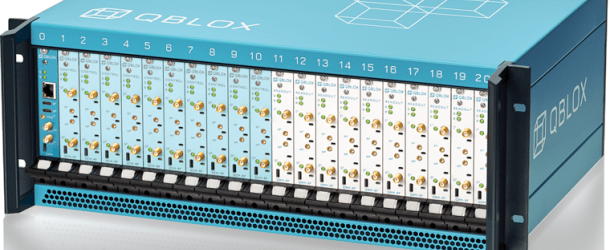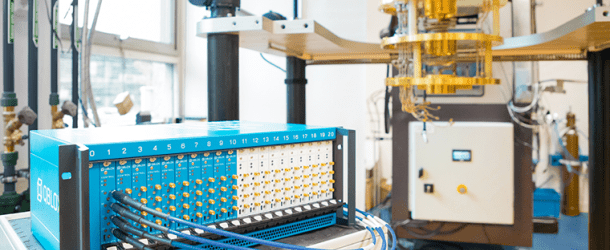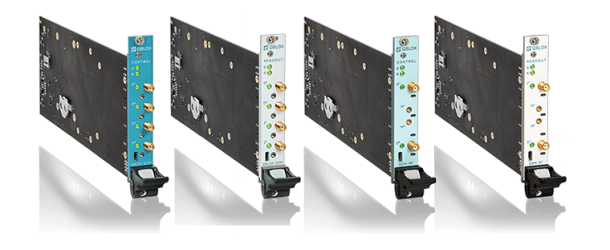Qblox Hardware and Software Stack Combines Unlevelled Noise Performance, Low-Latency Arbitrary Control Flows and Can Be Scaled Up to 100s of Qubits to Control Various Experimental Implementations of a Quantum Processor

(Qblox) Qblox is based in the Netherland and is a spinoff of QuTech, which enables Qblox to implement the latest scientific insights and take a position upfront in the worldwide race towards quantum advantage. With a dedicated team of scientists, engineers and developers, the team is pushing quantum technology to support scientists worldwide with our scalable and low-latency qubit control and readout equipment from ultrastable DC to 18.5 GHz for academic and industrial quantum labs.

IQT-NYC Online Welcomes Qblox to Online Exhibit May 17-21, 2021
Using the technology developed at QuTech as a springboard, the Qblox team has fundamentally reimagined the architecture of quantum control to create a single integrated system, called the Cluster, that provides all the functionality needed to manipulate and measure quantum computers. Alternatively, with general-purpose lab equipment it can take weeks or even months to fine tune all the parameters for a multi-qubit device. The Qblox architecture speeds up these routines by orders of magnitude, saving research teams significant amounts of time and money.
The Cluster is a modular system that has been designed with scalability in mind: a single unit fits inside a standard 19″ rack mount and provides control of systems containing a maximum of 20 qubits, while additional modules can be connected together to operate quantum processors with hundreds of quantum bits. Each module in the Cluster system contains all the instrumentation needed to control and read-out of quantum chips, including waveform generators, frequency up- and down-conversion and data-acquisition tools. As well as miniaturizing the electronic components and integrating them together, each of the components has been optimized for use with quantum systems.

The Cluster system can be used to control various experimental implementations of a quantum processor. Existing customers are using the system to control superconducting qubits and quantum dots, for which the Cluster provides a single plug-and-play solution that can directly generate and analyse signals ranging from ultrastable DC to frequencies up to 18.5 GHz. For platforms with optical control, like trapped ions, cold atoms, or nitrogen-vacancy (NV) centres in diamond the Cluster can be employed to drive electro and acousto-optical converters, enabling Qblox powerful processing technology in a wide variety of quantum computing platforms.
Along with developing control and readout hardware, Qblox has created a Python-based control software platform called Quantify (with co-development partner, Orange Quantum Systems). Quantify is an open-source framework that can be used to control experimental physics research setups and quantum computers. It provides extensive documentation, tutorials, robust test coverage and centralized support.
Quantify Core is the back-bone of full-stack setups and offers all basic functionality required to control the experiments required for quantum computing. Quantify Scheduler is a module for writing quantum programs. It features a unique hybrid control model allowing quantum gate- and pulse-level descriptions to be combined in a clearly defined and hardware-agnostic way. Quantify-scheduler is designed to allow experimentalists to easily define complex experiments, and produces synchronized pulse schedules to be distributed to control hardware. For the algorithm designer, this module allows better control over the pulse shapes sent to the QPU when performing noisy variational algorithms, while for an experimentalist this combination of fine pulse-level control and the more abstract gate-level control allows them to easily define complex experiments.
Qblox products are presently being used by Quantum labs around the world.
For more information and personalised demos, please email niels@qblox.com


















